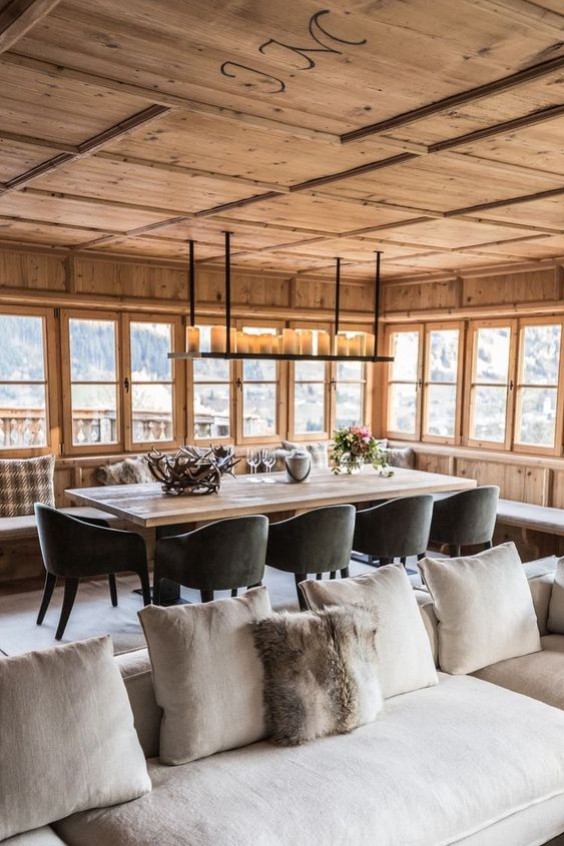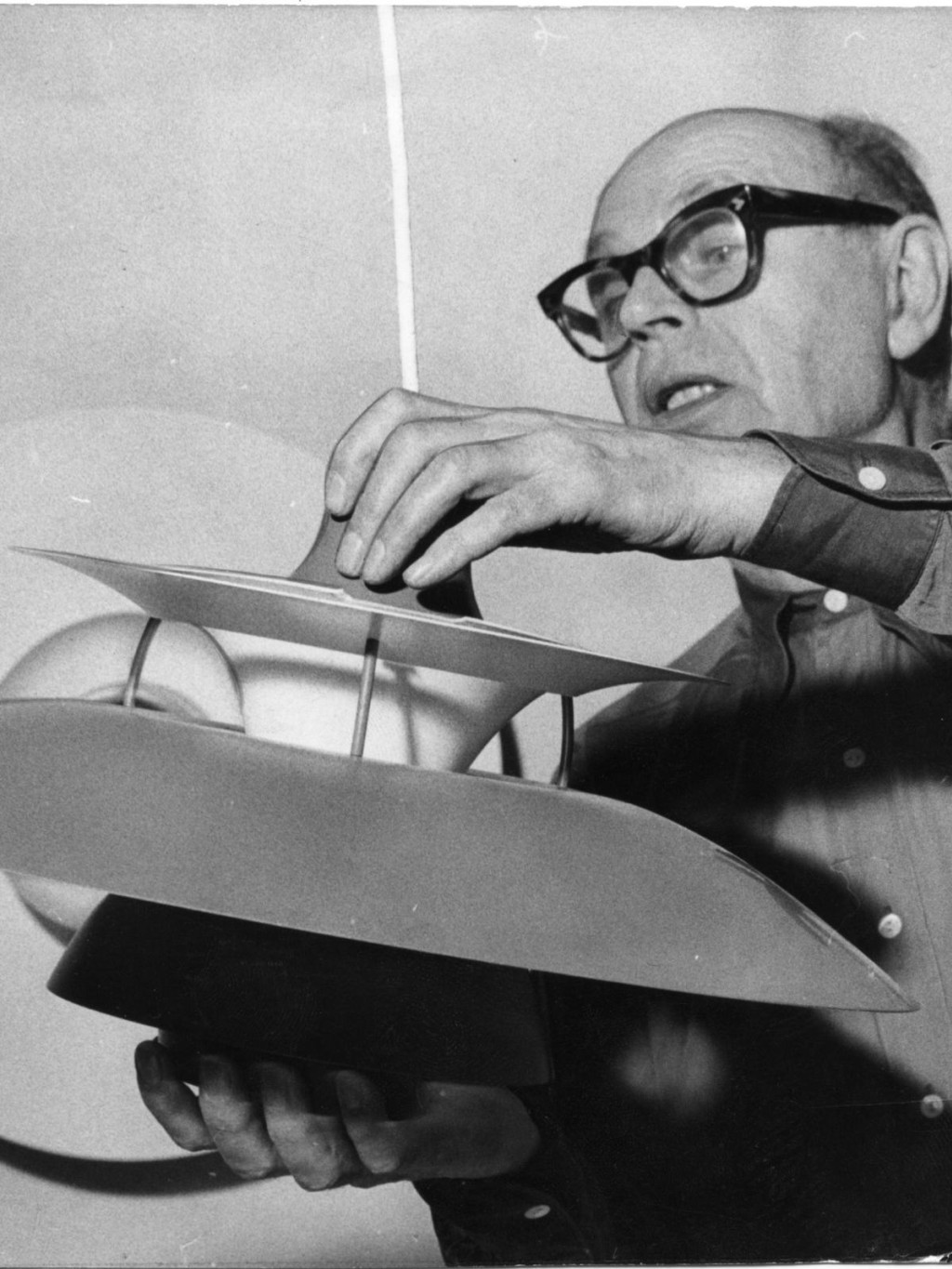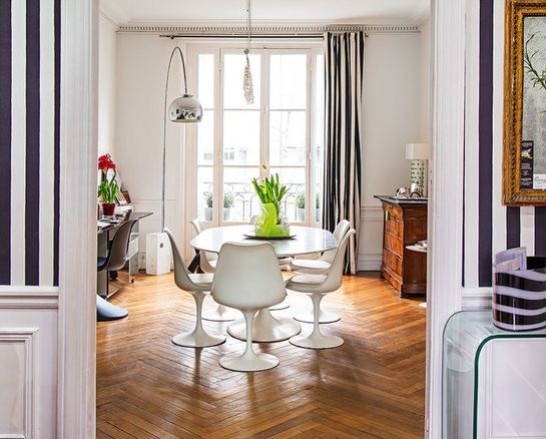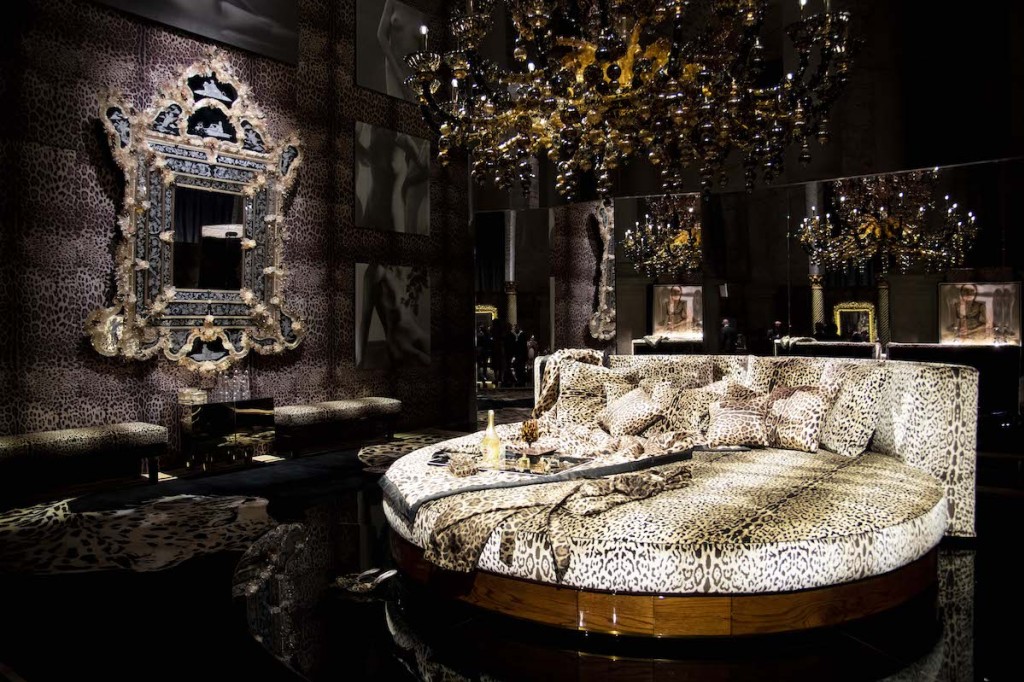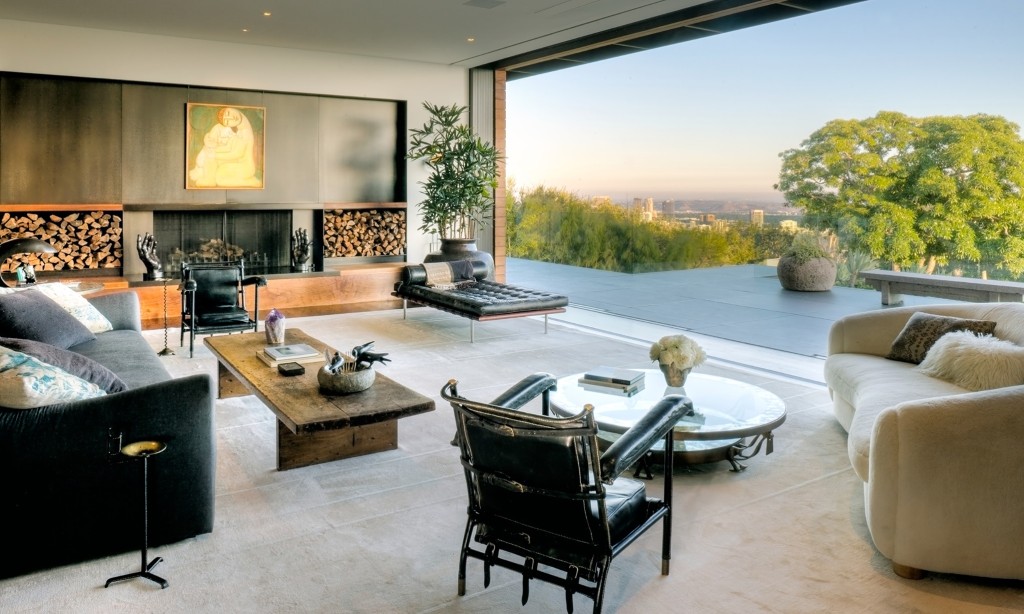Pierre Guariche (1926-1995) is an eminently talented figure of postwar design in France. Along with Joseph-André Motte (1925-2013), Michel Mortier (1925-2015) and Pierre Paulin (1927-2009), he is part of the generation that succeeded Jean Prouvé (1901-1984), Charlotte Perriand (1903-1999) and Marcel Gascoin (1907-1986). Creator and designer of furniture, Pierre Guariche is also a decorator and above all a formidable assembler. His taste for avant-garde aesthetics and the search for useful comfort led him to create some of the most beautiful pieces of French furniture of the 1950s and 1960s. It is no coincidence that the French furniture and decoration company Maisons du Monde, and more recently the French publisher Sammode, specializing in technical lighting, are reissuing his creations. Let's take a look at a very successful career and the iconic pieces that have punctuated his career.

Pierre Guariche enters at 19 years old the Ecole Nationale Supérieure des Arts Décoratifs (ENSAD), he follows there in particular the teachings of Rene Gabriel, and graduates 4 years later in 1949. He trained in the furniture industry through internships and had a decisive experience with Marcel Gascoin, a decorator from Le Havre who specialized in "mass-produced furniture" and who worked on the emergence of French design after the Second World War. From 1950, he launched his career with the creation of his first light: the lamp Rotaflex, for the specialized publisher Disderot. An entrepreneur at heart, he quickly set out on his own and created his own agency in 1951.

His entry into the world of design with the creation of a light fixture is no accident. Pierre Guariche will be throughout the 50s one of the most prolific designers in terms of lighting. And he knows how to draw everything: from floor lamps to desk lamps through wall lamps and suspensions. Very early on, his style was noticed: objects that were above all functional, at the service of the user's comfort, with clean and elegant lines. He is also a technician that his taste for the research of the function leads to innovate. This is thus the case for the luminaire model G23 with double pendulum that he designed for Disderot in 1951.





Throughout his collaboration with Ateliers Pierre Disderot, Pierre Guariche will create a whole series of lighting fixtures, never ceasing to mix elegance of form with creative and technical daring. He works with stamped metal and lacquer colors, perfects the mobility of his models (articulated ball joints) and uses innovative materials such as plexiglass or tube bulbs. Seduced by Pierre Guariche's "luminous" legacy, the publisher Sammode has been reissuing since 2018 some pieces including the famous G25 and G60 lights.





In addition to his collaboration with Disderot, Pierre Guariche designed for the publishers Airborne and Steiner seats that have become great classics of French design. This is the case of the "Tonneau" chair designed for Steiner in 1953, or the Vampire Armchair with incredibly fluid lines in 1954, also for Steiner. Guariche designed sleek, intelligent, and accessible pieces; his 1953 G1 rocking chair designed for Airborne would actually appear in the Prisunic catalog in 1972.





But he wanted to go further. Like other designers of the time who were asked to think about housing - France was then in the midst of a reconstruction period - he wanted to create rational, industrializable furniture to lower production costs and thus make it accessible to the greatest number. Without neglecting aesthetics, he wanted to break the codes of a too classical style. This is why he founded with Joseph-André Motte and Michel Mortier, 2 designers of his generation, the Atelier de Recherches Plastiques (A.R.P).
From 1953 to 1957, the trio, under the signature A.R.P, will collaborate with publishers that Pierre Guariche already knows very well: lighting, still for Disderot; Airborne, Steiner, for whom A.R.P draws armchairs, but also the furniture publisher Charles Minvielle. In their desire to design furniture adapted to more cramped surfaces for the time, Guariche, Motte and Mortier made, among other things, the very first modular and juxtaposable set called Elément Minvielle.


In 1957, Pierre Guariche became the artistic director of the Belgian furniture factory Meurop, a manufacturer that was active from 1950 to 1970. For Meurop, Pierre Guariche adapts his style to the times and designs a series of avant-garde seats using synthetic materials - he abandons natural materials and wood - and with an aesthetic language inspired by the Conquest of the Stars that the United States and the USSR were then fighting. His seats are named Jupiter, Luna, Polaris, Mars...



At the same time as he was developing Meurop's range of furniture, Pierre Guariche was to gradually reorient his activity towards interior architecture projects. The time is ripe for large public and private commissions. This is why he will carry out several important projects such as the development of the Essonne Prefecture or the Isola 2000 ski resort in La Plagne. He will also create the furniture for the Maison de la Culture Le Corbusier in Firminy in the Loire.
The Essonne Prefecture building site is a major project in the designer's career. The aim of the building site being to bring an institution of the Fifth Republic into a new modernity. Guy Lagneau, an architect directly commissioned by André Malraux, then Minister of Cultural Affairs, to direct the project, called upon his vision and sense of design. Guariche, supported by his collaborator Alain Marcot, will be able to rely on the Atelier de recherche et de création (ARC) of the Mobilier national and propose a form of "total architecture," a symbol of the revival of French furniture.





In 1965, Pierre Guariche received the René Gabriel prize. He also teaches, at the Ecole Nationale Supérieure des Arts Décoratifs and at the Ecole Supérieure d'Architecture de Tournai.
From Pierre Guariche's design we will remember his taste for clean and meticulous lines, as well as his desire to make functional and elegant furniture accessible to the general public.
Find all of Guariche's vintage pieces here : https://www.design-market.fr/70_guariche
And Sammode reissues of Guariche lighting here: https://www.design-market.fr/29__sammode
François Boutard

